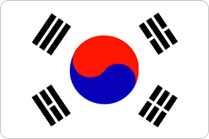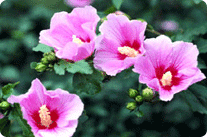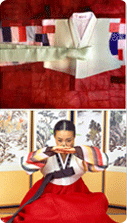Travel Information
| About Korea
Home > Travel Information

The Korean peninsula extends southward from the eastern end of the Asian continent. The peninsula is roughly 1,030 km (612 miles) long and 175 km (105 miles) wide at its narrowest point. The Korean peninsula extends southward from the eastern end of the Asian continent. The peninsula is roughly 1,030 km (612 miles) long and 175 km (105 miles) wide at its narrowest point. Mountains cover 70% of Korea's land mass, making it one of the most mountainous regions in the world. The lifting and folding of Korea's granite and limestone base has created breathtaking landscapes of scenic hills and valleys. The mountain range that stretches the length of the east coast plunges steeply into the East Sea, while along the southern and western coasts, the mountains descend gradually to the coastal plains that produce the bulk of Korea's agricultural crops, especially rice. South Korea's 99,500sq.km is populated by 47.9 million people. Administratively, the Republic of Korea consists of nine provinces; the capital Seoul; and the six metropolitan cities of Busan, Daegu, Incheon, Gwangju, Daejeon and Ulsan. In total, there are 77 cities and 88 counties.
National Flag
 |
The Korean flag is called "Taegeukgi" in Korean. Its design symbolizes the principles of the yin and yang in Oriental philosophy. The circle in the center of Korean flag is divided into two equal parts. The upper red section represents the proactive cosmic forces of the yang. Conversely, the lower blue section represents the responsive cosmic forces of the yin. The two forces together embody the concepts of continual movement, balance and harmony that characterize the sphere of infinity. The circle is surrounded by four trigrams, one in each corner. Each trigram symbolizes one of the four universal elements: heaven ( ), earth ( ), earth ( ), fire ( ), fire ( ), and water ( ), and water ( ). ).
|
National Flower
 |
The national flower of Korea is the mugunghwa, rose of sharon. Every year from July to October, a profusion of mugunghwa blossoms graces the entire country. Unlike most flowers, mugunghwa is remarkably tenacious and able to withstand both blight and insects. The flower's symbolic significance stems from the Korean word mugung, meaning immortality. This word accurately reflects the enduring nature of Korean culture, and the determination and perseverance of the Korean people.
|
Population
As of 2006, the population of the Republic of Korea stood at 49,024,737. In terms of density, there are roughly 480 people per square kilometer. Conversely, the population of North Korea was 24,000,000 in 2005. Once considered to be a serious social problem, historically, the threat of rapid population posed serious social repercussions on developing countries.
Yet such fears of swelling growth don't raise much cause for alarm on the peninsula. With the advent of successful family planning campaigns and changing attitudes, there are signs that the population growth has curbed remarkably in recent years. The number of people aged 65 and older was up 0.5 percent from 2005, numbering 4.56 million, roughly 9.3 percent of the entire population.
Language
Hangeul, Korea's official language, was first invented by King Sejong during the mid-15th Century. Originally called Hunminjeongeum, the language was fully conceived in 1443, and further promulgated by King Sejong of the Joseon Dynasty in 1446. At the time of its inception, the language consisted of 17 consonants and 11 vowels. Presently, 3 of the originally established consonants and 1 vowel are no longer in use, bringing the present total number of characters to 24. Korea's Hangeul vocabulary is formed by the selective combination of vowels and consonants to create words.
The official name for the Korean language was changed to 'Hangeul' in 1910. Hunminjeongeum Proclamation Day was called ‘Gagya Proclamation Day' up until 1926, and it wasn't until 1928 when it was changed to its current celebration, ‘Hangeul Proclamation Day'.
The chart below represents the 24 Hangeul characters together with their romanized equivalents. 'The Hunminjeongeum,' a historical document which provides instructions to educate people on the use of Hangeul, is registered with UNESCO. UNESCO awards a 'King Sejong Literacy Prize,' every year in memory of the inventor of Hangeul.
Food
 |
Diverse array of foods and dishes can be found throughout Korea. Korea was once primarily an agricultural nation, cultivating rice as their staple food since ancient times. These days Korean cuisine is characterized by a wide variety of meat and fish dishes along with wild greens and vegetables. Various fermented and preserved food, such as kimchi (fermented spicy cabbage), jeotgal (matured seafood with salt) and doenjang (fermented soy bean paste) are notable for their specific flavor and high nutritional value. The prominent feature of a Korean table setting is that all dishes are served at the same time. Traditionally, the number of side dishes varied from 3 for the lower classes to 12 for royal family members. Table arrangements can vary depending on whether a noodle dish or meat is served. Formal rules have developed for table setting, demonstrating the attention people pay to food and dining. Compared to neighboring China and Japan, a spoon is used more often in Korea, especially when soups are served.
|
Traditional Cloth (Hanbok)
 |
The hanbok has been the Korean people's unique traditional costume for thousands of years. The beauty and grace of Korean culture can be seen in photographs of women dressed in the hanbok. Before the arrival of Western-style clothing one hundred years ago, the hanbok was everyday attire. Men wore jeogori (Korean jackets) with baji (trosers) while women wore jeogori with chima (skirt). Today, the hanbok is worn on days of celebration such as wedding, Seollal (Lunar New Year's Day) or Chuseok (Korean Thanksgiving Day).
|
Traditional Folk House
 |
A traditional Korean house is called 'Hanok'. Hanok sought to create a living space based on the coexistence of nature and humans. Accordingly, the natural aspects of a traditional Korean houses range from the structure's inner layout to the building materials which were used. Another unique feature of traditional houses is their special design for cooling the interior in the summer and heating the interior in the winter. Since Korea has such hot summers and cold winters, the 'ondol gudeul,' a floor-based heating system and 'daecheong,' a cool wooden-floor style hall were devised long ago to help Koreans survive the frigid winters and to make the sweltering and humid summers bearable. These primitive types of heating and air-conditioning were so effective that they are still in use in many homes today.
|
copyright(c) KOREA ORGANIZATION. ALL Rights Reserved.
www.visitkorea.or.kr


 ), earth (
), earth ( ), fire (
), fire ( ), and water (
), and water ( ).
).



















